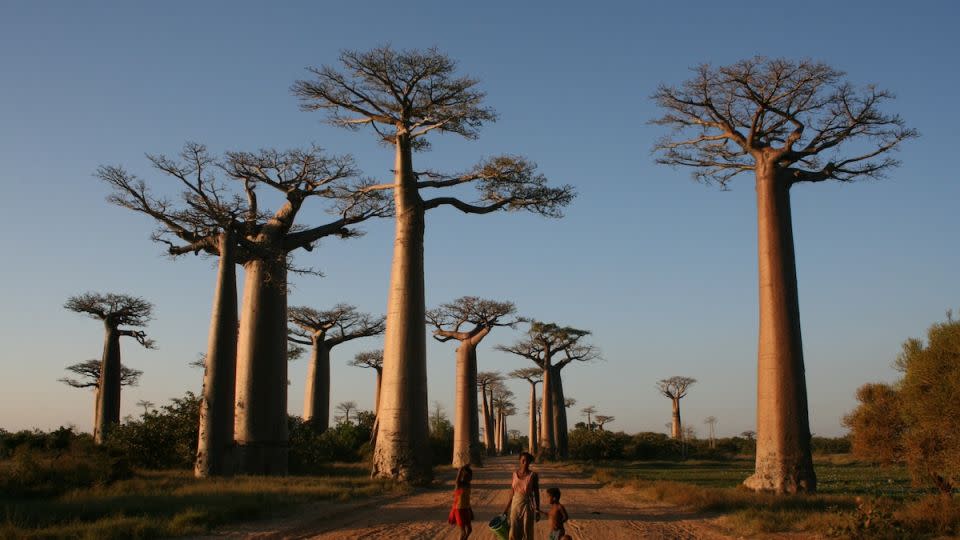Giant bushes, swellings of the trunk and stump of the cover can be detected. Baobabs can live for more than 1,000 years, appearing as the dominant species in sun-baked forests in Madagascar, a part of continental Africa, and northwestern Australia. Known as the “Mother of the Forest” and the “Tree of Life”, almost every part of the tree can be damaged by humans and animals, meaning they are very valuable to whatever ecosystem they live in. .
His identity is only revealed through the mystery of where he originated from. Until now, science has had to work with some conflicting hypotheses – the leading theory is that they came from mainland Africa. According to a study about the last incident published in the journal Nature, this is not the case. A team of world researchers effectively sequenced the genomes of each of the eight baobab species, examined their dating with each other and concluded that they originated in Madagascar.
The scoop comes as the bushland on the island, home to six baobab species, faces rapid depletion, with the study suggesting extinction is likely by 2080 unless significant interventions are instituted across the playground.
Biologists have struggled to resolve the tree’s origins because the wrong fossils of ancient baobabs or their ancestors were found, said one of the leading authors, Dr. Wan Jun, a researcher at the Wuhan Botanical Farmland in Hubei. -Nan told. China. He said that in earlier research the genetic information that had been obtained from the baobab was restricted. However, with the primary complete genome sequence of each species, “we can tell a good story about evolutionary history,” he argued.
The story begins with the origin of the baobab in Madagascar about 21 million years ago, before the genus (the clinical name) Adansonia) began to diversify, and two species reached Africa and Australia about 12 million years ago. This happened very close to the breakup of the “supercontinent” Gondwana, so according to the researchers, the baobab likely spread through seeds carried by particles floating in the ocean due to flash floods.
The study, a collaboration between the Wuhan Botanical Garden in China, the Royal Botanical Garden in the United Kingdom, the University of Antananarivo in Madagascar and Queen Mary College of London, was also able to track interspecies gene flow of all eight. Baobab varieties for primary date. This data, which demonstrated low genetic diversity between the two species, and interbreeding of one species with another more populous species, provides insight into recent competition between baobabs, Dr Wan said. And can help provide protection to trees. The next day is coming.
“We hope that in the future, the people of Madagascar will be able to care for the baobabs by treating them not as a whole, but as different species,” he said.

Only one baobab species is not included in the IUCN’s Crimson Checklist of Threatened Species: A digitata, which populates mainland Africa. Three species are threatened with extinction in Madagascar, and the IUCN has recommended reclassifying one of them, A. suarezensis, ranging from “endangered” to “critically endangered”. Situation modeling indicates that without improved intervention the species could become extinct within 50 years.
According to Dr. Sehenno Andriantsarlaza, a tropical ecologist working in Madagascar, this prediction is “plausible” and “highlights the urgent need for action”.
Dr. Andriantsaralaza, who was no longer involved in the analysis, positively supported the decision to change the IUCN status of the Malagasy baobab. Even though he described the study as “brilliant and worthwhile” but handed down “valuable” genetic information, he cautioned that it represented “just one piece of the puzzle in understanding the evolutionary history and dispersal mechanisms of these iconic giant trees”. Does.
The study’s modeling concluded that while the area of baobab species on the island has been declining over millennia, human-caused environmental trade and ongoing deforestation have exacerbated the contraction and fragmentation of baobab populations in recent years.
“It is important to recognize that amidst the challenges, there are also local success stories and initiatives led by local organizations and local researchers,” said Dr. Andriantsaralaza.
He cited the conservation team Madagasikara Vokaji, which coordinates initiatives in the north of the island that provide protective experiences. a periri And A. suarezensis, Additionally, PEER, a USAID-supported program she is considering, aims to empower local people to contribute to the sustainable control of the ecosystem.
“Madagascar’s baobab forests belong to local communities who depend on natural resources to support their families,” he said. “They should be part of the solution, not part of the problem.”
Dr. Wan said he hoped the analysis and media consideration would lead to additional conservation efforts for the island’s baobabs.
While applauding the step forward, he noted the study’s limitations – only one individual per species had been sequenced – although he hoped Life Research would increase sampling and address additional extraordinary questions related to the trees.
Dr. Wan acknowledged that the likelihood of discovering fossil evidence to confirm the findings of genetic information is low. So there is every possibility that these tall bushes will probably protect some of their closest secrets.
Create an account on CNN.com for additional CNN information and newspapers
Discover more from news2source
Subscribe to get the latest posts sent to your email.



